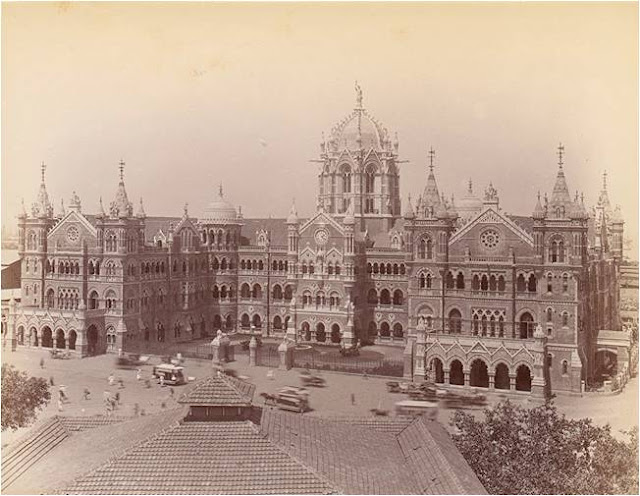Where did tigers come from?
Tigers (and all other carnivores) are descended from civet-like animals called miacids that lived during the age of the dinosaurs about 60 million years ago. These small mammals, with long bodies and short flexible limbs, evolved over millions of years into several hundred different species, including cats, bears, dogs and weasels. Approximately 37 cat species exist today, including Panthera tigris, the tiger.
Tigers evolved in eastern Asia. Andrew Kitchener states in the book The Natural History of Wild Cats, that
"Fossil tigers are known from the Late Pliocene/Early Pleistocene of southeastern Asia. A small primitive tiger was living in North China during the Early Pleistocene. Between 1.3 and 2.1 million years ago, tigers were living in Java...from about two million years ago, tigers spread from their evolutionary centre in eastern Asia in two directions. Tigers moving through the Central Asian woodlands to the west and southwest gave rise to the Caspian tigers. Secondly, tigers from China moved to the east of the central Asian mountains to southeastern Asian and the Indonesian islands, and thence westwards to India (Hemmer, 1987)."
 |
| Tiger Walking |
Facts
A powerful hunter with sharp teeth, strong jaws, and an agile body, the tiger is the largest member of the cat family (Felidae). It is also the largest land-living mammal whose diet consists entirely of meat. The tiger's closest relative is the lion. Without the fur, it is difficult to distinguish a tiger from a lion but the tiger is the only cat with striped fur.Scientists have classified tigers into eight subspecies: Bali, Java, Caspian, Sumatran, Amur (or Siberian), Indian (or Bengal), South China, and Indo-Chinese. The first three subspecies are extinct. However recent analysis suggests that there is little reason for dividing living tigers into these subspecies; all are nearly identical both genetically and physically. Some scientists suggest making a distinction between island tigers (of which only the Sumatran remains) and mainland tigers.
Size: Tigers range in size from the diminutive Sumatrans, in which females weigh between 165 and 242 pounds and males weigh between 220 and 310 pounds, to the largest mainland tigers, such as Indians, in which females weigh between 220 and 352 pounds and males weigh between 396 and 570. Total length ranges from seven to 12 feet.
Habitat: The tiger's current distribution is a patchwork across Asia, from India to the Russian Far East. Tigers require large areas with forest cover, water, and suitable large ungulate prey such as deer and swine. With these three essentials, tigers can live from the tropical rainforests of Sumatra and Indochina to the temperate oak forest of the Amur River Valley in the Russian Far East.
Diet: Tigers prey primarily on wild boar (Sus scrofa) and other swine, and medium to large deer such as chital (Axis axis), red deer (Cervus elaphus), and sambar (C. unicolor). Where they occur together, tigers also hunt gaur (Bos frontalis), a huge wild cattle. Tigers also kill domestic animals such as cows and goats, and occasionally kill people.
Hunting: The tiger hunts alone, primarily between dusk and dawn, traveling six to 20 miles in a night in search of prey. A typical predatory sequence includes a slow, silent stalk until the tiger is 30 to 35 feet from the selected prey animal followed by a lightening fast rush to close the gap. The tiger grabs the animal in its forepaws, brings it to the ground, and finally kills the animal with a bite to the neck or throat. After dragging the carcass to a secluded spot, the tiger eats. A tiger eats 33 to 40 pounds of meat in an average night, and must kill about once per week. Catching a meal is not easy; a tiger is successful only once in ten to 20 hunts.
Territoriality: An adult tiger defends a large area from all other tigers of the same sex. The primary resource of this territory is food. A female's territory must contain enough prey to support herself and her cubs. A male's territory, additionally, must offer access to females with which to mate. Thus, a male's territory overlaps with that of one to seven females. Male territories are always larger than those of females. But territory size varies enormously and is directly related to the abundance of prey in a given habitat. For instance, Indian tigers in prey-rich habitats in Nepal defend quite small territories: female territories average just eight square miles. At the other extreme, in the prey-poor Russian Far East, Amur tiger female territories average 200 square miles. In both areas, male territories are proportionately larger.
Social Behavior: Except for a mother and her cubs, tigers live and hunt alone. But that does not mean they are not social. Scent marks and visual signposts, such as scratch marks, allow tigers to track other tigers in the area, and even identify individuals. A female tiger knows the other females whose territories abut hers; in many cases, a neighbor may be her daughter. Females know their overlapping males (and vice versa) and probably know when a new male takes over. All tigers can identify passing strangers. So, solitary tigers actually have a rich social life; they just prefer to socialize from a distance.
Reproduction: A male and female meet only briefly to mate. After a gestation of 100 to 112 days, two to three blind and helpless cubs are born in a secluded site under very thick cover. Cubs weigh just over two pounds at birth and nurse until they are six months old. During the next 18 months, they gradually become independent, and at about two years of age strike out alone to find their own territory. Females may establish a territory adjacent to that of their mother, or even take over part of their mother's territory. Adult females generally produce a litter every two years.
Mortality and Longevity: Tigers can live to 20 years of age in zoos but only 15 years in the wild. And most wild tigers do not live that long. Only half of all cubs survive to independence from their mother at about two years of age. Only 40 percent of these survivors live to establish a territory and begin to produce young. The risk of mortality continues to be high even for territorial adults, especially for males, which must defend their territories from other males.

























